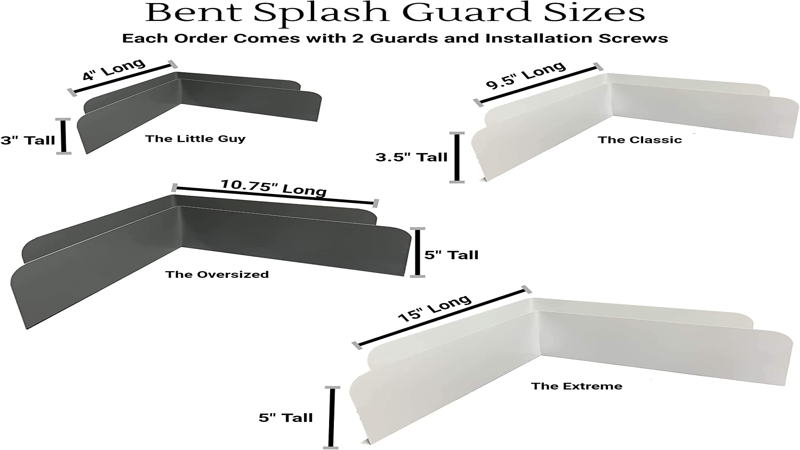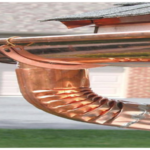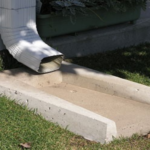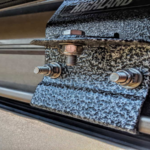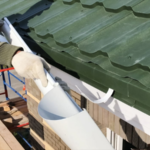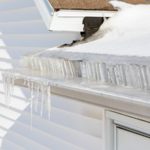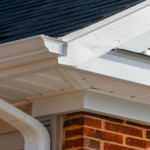Installing gutters is an important home improvement task that helps protect your home from water damage. But, with so many different types and styles of gutters available, choosing the right one for your home can be a daunting task. This complete guide to gutter installation in Richmond, VA will help you get started on the right foot, so you can be prepared before the rainy season hits.
There are two main types of gutters available on the market today: sectional and seamless. Sectional gutters are made up of individual sections that are joined together, while seamless gutters are made from a single continuous piece of material. Both types of gutters have their own advantages and disadvantages, so it’s important to weigh your options carefully before making a decision.
Sectional gutters are usually less expensive than seamless gutters, and they’re easier to install because you don’t have to worry about measuring and cutting a long piece of material. However, sectional gutters can be more prone to leaks and joint separation, and they’re not as aesthetically pleasing as seamless gutters.
What are some common mistakes that people make when installing gutters?
- Not cleaning the gutters before installation. This can lead to leaves and debris getting caught in the gutters and causing clogs.
- Not installing the gutters properly. This can lead to gutters that are not level, which can cause water to pool in certain areas and potentially cause leaks.
- Not installing gutter guards. This can help to prevent leaves and debris from getting into the gutters and causing clogs.
- Not properly sealing the gutters. This can cause leaks and allow water to enter the home.
- Not regularly cleaning the gutters. This can lead to the build-up of leaves and debris, which can eventually cause clogs.
What should you not do when installing gutters?
- Don’t cut the gutter sections too short. This will result in gutters that are too shallow and won’t be able to effectively funnel water away from your home.
- Don’t use too much sealant. This can cause the gutters to become clogged and difficult to clean.
- Don’t install the gutters without first testing them. Make sure the gutters are properly secured and the downspouts are properly attached before using them.
- Don’t neglect to clean the gutters. Gutters need to be cleaned on a regular basis to prevent debris build-up.
How do I prepare my gutters for winter?
- Start by cleaning your gutters and downspouts of any leaves or debris.
- Next, check for any cracks or holes and repair them as needed.
- Once your gutters are clean and in good repair, you can then begin to winterize them.
- One way to do this is to apply a coat of weatherproof sealant to help prevent ice and snow from building up.
- Finally, make sure that your gutters are properly secured to your home so that they can withstand the weight of any snow or ice that may accumulate during the winter months.
How do you prepare new gutters?
- Begin by measuring the length of your home’s eaves. This will determine how much gutter material you will need to purchase.
- Next, using a hacksaw, cut the gutters to the appropriate length.
- Once the gutters have been cut to size, it’s time to install the hangers. Hangers should be spaced evenly along the length of the gutter, and secured with screws.
- With the hangers in place, now you can attach the gutters to the hangers. Start at one end and work your way down the length of the gutter, using screws to secure the gutter in place.
- Finally, install the downspouts. Cut them to size, and then secure them in place with screws.
Should gutters be nailed or screwed in?
There is no definitive answer to this question as there are pros and cons to both nailing and screwing gutters in place. Nailing gutters is generally the more traditional method, and it can be seen as more secure since the nails will keep the gutters in place even if strong winds or heavy rains were to hit. Screwing gutters in place, on the other hand, can be seen as more reliable since the screws will not come loose as easily as nails can. Ultimately, it is up to the homeowner to decide which method they prefer.
Should there be a gap between roof and gutter?
The answer to this question is a resounding yes! A gap between your roof and gutter is essential for a number of reasons. First, it allows for proper drainage of rainwater. Without a gap, rainwater can pool on your roof and eventually leak into your home, causing serious damage. Second, a gap provides ventilation for your attic. If your attic is not properly ventilated, it can lead to a buildup of heat and moisture, which can cause your roof to rot. Finally, a gap between your roof and gutter helps to keep leaves and other debris from clogging your gutters. So, if you want to protect your home from water damage and keep your gutters clear, be sure to maintain a gap between your roof and gutter.
Why would you not put gutters on a house?
There are a few reasons why someone might choose not to put gutters on their house. One reason could be that they live in an area with very little rainfall and they see no need for them. Another reason could be that they think gutters are unattractive and they don’t want to mar the look of their home. Finally, some people believe that gutters are unnecessary and that they can cause more problems than they solve.
Should gutters be flush with fascia?
While there is no definitive answer, most experts agree that gutters should be flush with the fascia. This ensures that water will properly drain away from the home, and it also gives the gutters a clean, finished look.
Conclusion
If you’re thinking about getting new gutters installed before the rainy season hits, now is the time to act! This complete guide will walk you through everything you need to know about gutter installation in Richmond, VA, from choosing the right materials to finding a reputable contractor. By following these tips, you can be sure that your new gutters will be able to handle whatever the weather throws at them.
